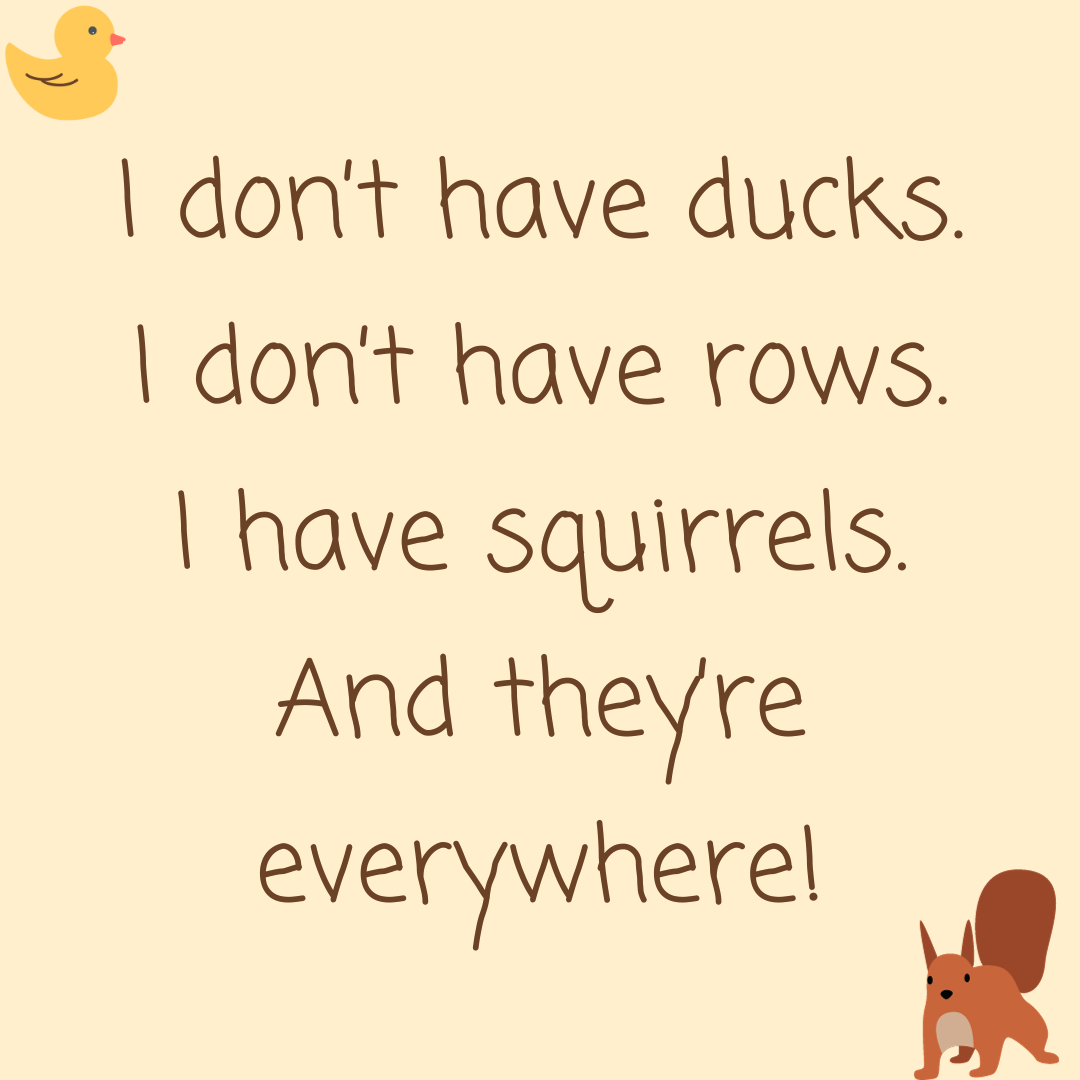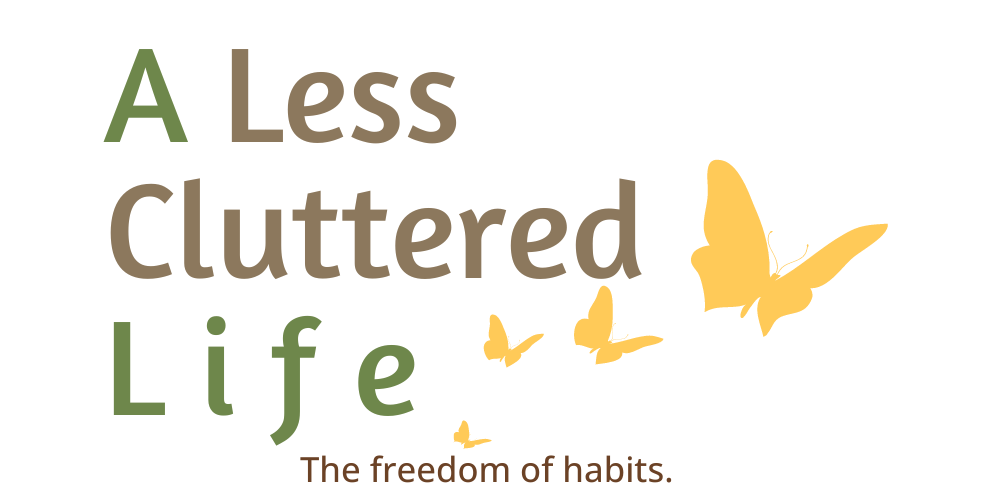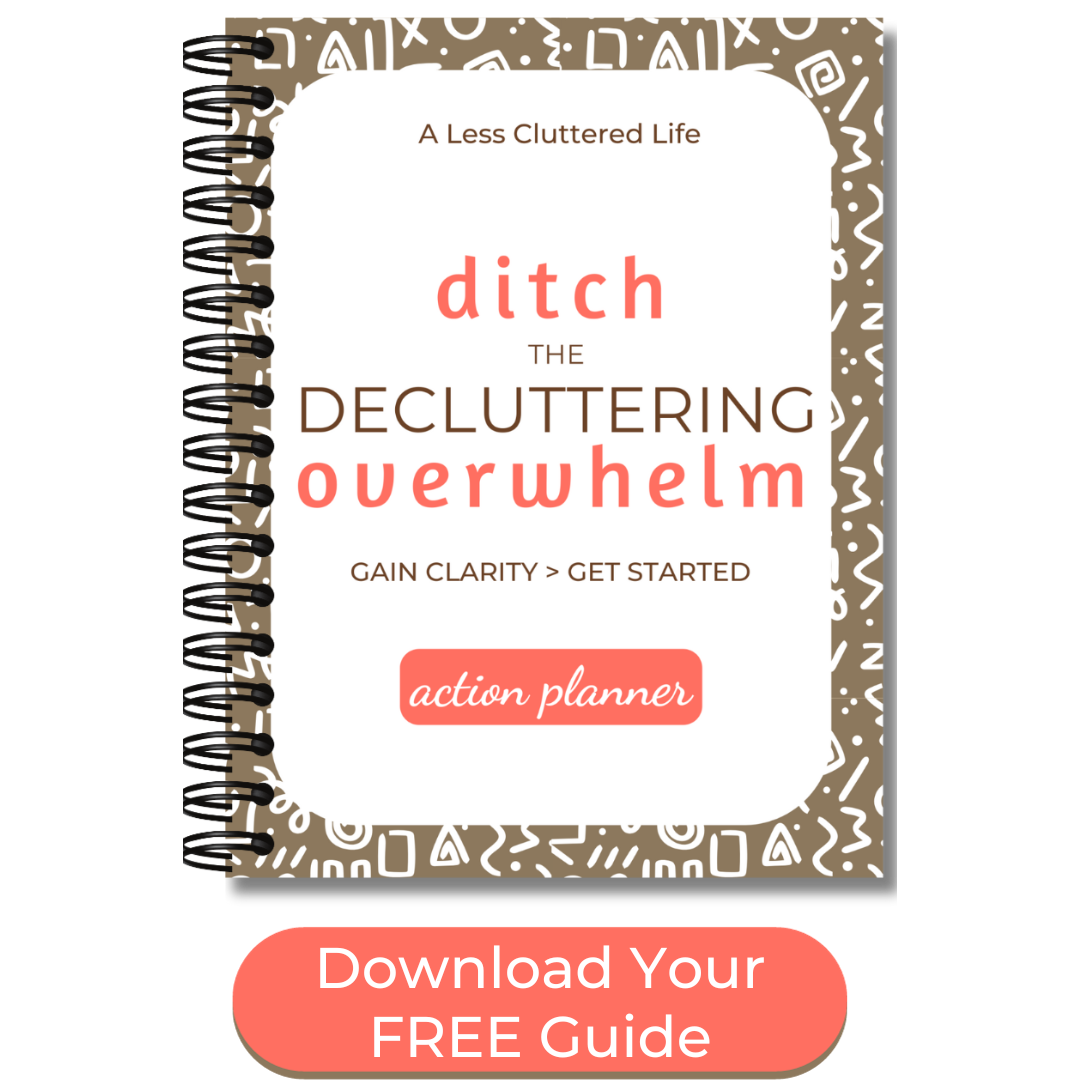|
by Susan McCarthy Are you making decluttering your home a more difficult process than it needs to be by being misled by these decluttering mistakes? These actions can cost you time as well as mental stress and your physical energy working through tasks that you may end up repeating. While there's no one right or wrong way to declutter, there are some actions that can cost you time and energy...and leave you circling back to work on a space you recently tried to declutter. Avoiding these decluttering mistakes can make the process go smoother and help you feel as if your decluttering journey isn't a matter of one detour after another. 14 Decluttering Mistakes and How to Overcome ThemMaking a decluttering mistake doesn't mean that you're bad at decluttering or that your home will never be organized. If you find yourself making one (or more) of these mistakes, it's more a sign that you were never taught how to declutter in an effective way. Maybe your parents found it easier to take care of decluttering and organizing tasks on their own. While you saw the result of their efforts, you never learned how to get there on your own. Or perhaps your family wasn't concerned about keeping the house organized. Or their idea of organizing was more along the line of storing things in bins than clearing unnecessary items from the house. However, becoming aware of the actions that have been holding back your decluttering efforts is a big step toward more effective decluttering sessions. 1. Starting a Decluttering Project without a PlanWhen you view decluttering simply as the act of tossing stuff in trash bags or filling boxes to bring to the donation center, you make the process more difficult for yourself. Why? Because how will you know what to get rid of and what to keep if you don’t know why you’re decluttering? Consider the activities that will occur in a room and what types of things you need stored in the room to support those activities. This can help you decide what belongs and what doesn’t. Also, thinking about the types of activities you’d like to do once you aren’t dealing with clutter can help guide your decisions about what to keep. You can list the things you want to keep or bring into the room as well as what will need to find a new home. Don’t go off buying stuff just yet. Decide when you’ll declutter and mark it in your calendar, so the project gets done. If you want, you could even note the different pieces of furniture you want to declutter and organize on certain days. Note that you may be more successful getting through all the steps you have to take if you plan to work in smaller spaces over multiple days as opposed to devoting an entire day to doing everything. 2. Avoiding the Clutter That’s Bothering You the MostThe question that I probably get asked most often is, “Where do I start decluttering?” There is no best answer here. Yes, different professional organizers have their own systems, and each may tell you to begin in this space or that room in your home. They are neither right nor wrong. The best space for you to start decluttering in your home is the room or area that bothers you the most. But that can feel overwhelming…as if you need to declutter that space perfectly since it bothers you so much. You decide to avoid that task and take on smaller projects – like your medicine cabinet or the coffee table. And while working on a small task can help you feel more comfortable with the decluttering process, sooner than later you want to turn your attention to the clutter that’s bothering you the most…even if you don’t think you’ll do it properly. So why work in that space…whether it’s your closet, desk, kitchen, or craft room? Clearing the clutter and organizing an area that bothers you will improve your life. You’ll feel happier in this space with the frustrating clutter removed. The space will function better, which will likely save you time and ease stress. Seeing a transformation in a space that has bothered you for a while will help you feel a sense of accomplishment and give you a boost of momentum to move onto other rooms. 3. Decluttering Someone Else’s PossessionsI get it. I want to toss some of my husband’s stuff too. I’ve suggested that he declutter a few items…to no avail. And there are times that I’m convinced he wouldn’t notice if a few things went missing. But don’t declutter someone else’s possessions. You wouldn’t want someone to do it to you. You can offer to help a spouse, partner, parent, or friend. However, you also have to realize that all decisions are theirs. If you know that will be frustrating, don’t offer to work with them. The best way to help them declutter is to declutter your own belongings and show them or talk about the benefits you are experiencing – saving time, not losing items, less stress, less time spent cleaning and tidying your home, and so on. With children and teens, work with them so they better understand what straightening their room looks like. Explain how items can only fit their storage space…it they put their puzzles in a bin, but they don’t all fit, help them choose which ones to declutter. Be an example and follow the rules you want others to learn. 4. Zigzagging throughout Your HouseInevitably, as you go through the items in a room, you’ll find things that belong elsewhere. Maybe, as you made your plan, you realized that you want to do some rearranging and shift things from one room to another. To work most effectively, you want to stay focused on decluttering and organizing one room. As tempting as it is to move the items right away and put them away properly, you want to contain this impulse. As you find misplaced items that belong in other rooms, put them in a laundry basket or bin. Collect the items as you stay focused on the room you’re decluttering. Put them away when you are finished with the room, or you need a break from what you’re doing. However, be careful that you don’t end up shifting your focus to putting away these items perfectly (which may involve decluttering here and there throughout your home). When you stretch your efforts and attention to too many spots throughout your home, you’ll have a more difficult time seeing the progress you’re making. And you don’t want to waste time organizing a drawer or cabinet in another room to put things away if you haven’t set a goal and plan for that room. You may end up reworking your efforts when you get to that room. 5. Organizing While You DeclutterDecluttering is the process of removing the items you don’t, won’t, or can’t use. Organizing is all about making it easy to retrieve and return the things you want to use when you want to use them. Trying to declutter and organize at the same time will likely result in a lot of wasted time. You’ll organize a drawer perfectly only later to find additional things that belong there. Then you’ll be left sorting through things again as you try to figure out what to keep and what to get rid of. Or you’ll want to change where you’re storing items, so you have enough space. Either way, you’ll feel like you’re stuck doing the same task over and again. Instead, declutter first and then organize items. When you shift things around you won’t feel as if you’re reorganizing the space. So, yes, this means you can return items to a drawer or shelf temporarily to move them out of the way while you continue to declutter the space. Also, temporarily returning items to a storage space can help you see if you need to declutter more items. And since you’re going to declutter before you organize, this means you won’t be buying any bins or drawer organizers before you declutter. Again, you won’t know what you’re organizing until you’ve decluttered. 6. Glancing at a Space and Deciding Everything That's There Belongs ThereWhen decluttering, you want to empty a space to truly evaluate what’s stored there. While it can be tempting to open a door or drawer and decide that everything belongs there, handling the items can allow you to access their condition and judge the last time you removed the item from its storage space. Just because an item has been stored on a certain shelf for as long as you can remember doesn’t mean it still earns that spot. 7. Emptying the Entire Contents of a RoomWhile gathering similar items together allows you to see what you have, you want to be mindful that you aren’t making a project bigger or more complicated than it must be. This means that you don’t have to do anything as extreme as emptying the contents of a room into another room or emptying every drawer, cabinet, and cubby in a room and piling the contents in the middle of the room. Hello, overwhelm! Instead, you can empty the contents of one drawer and sift through those items, deciding if anything is trash, what belongs in another room, what you want to donate or sell, and what gets returned to this space. Then move onto the next drawer. When you see what remains, then you can fine tune how you want to organize the items. While emptying the contents of, say, the garage onto the driveway forces you to acknowledge everything you’ve been storing in this space, you need to know that you have the time and energy to go through everything and return only what you want to keep in this space. Having a plan can help guide your actions so you get the results you want. But what will you do if this project takes longer than the time you allotted? Do you haul what you didn’t sort back into the garage? Do you have the time to continue the project the next day? After eight or twelve hours of hard labor will you feel up to continuing the project? And what if you’ve emptied the contents of your kids’ shared bedroom into the living room? Have you made it more difficult to use your room(s) while you finish this decluttering project? Avoid making a project more complicated than it has to be. 8. Keeping Just in Case ItemsIt can be very tempting to hold onto items because they are useful…but remember, useful and used aren’t the same thing. And while it can feel sensibly to hold onto things and be prepared for “someday” is it worth storing things that might get used when this makes it more challenging to store and access the things that you do use?
9. Holding onto Items that You Plan to Donate or SellYou haven't truly decluttered something until it leaves your home. The boxes lined against the wall near your front door, awaiting you to drop them off at the local donation site are still taking up space in your home. The boxes in your garage, designated for a yard sale, haven't left your home. A mistaken belief when it comes to donating or selling items is that you need to have everything gathered to take one of these actions. Taking action sooner, when you are starting the process of decluttering your home, helps you learn that the consignment shop you figured would take your clothing wasn't as interested as you thought they would be...and shipping some of your items was more expensive that you planned. Create a schedule for regularly getting decluttered items from your home. If you're planning on a yard sale, set the date...and if it won't be for months, decide if it is worth being stuck in decluttering limbo while you wait to get things out of your home. 10. Attaching a Monetary Value to EverythingIt is incredibly frustrating to find items in your home that rarely…or never…got used. And if you have the time, you could sell these things. The challenge here is deciding if it is worth your time to photograph, write descriptions, post, answer questions, keep the items organized, and ship each item that sells. What amount of money would you need to make on an item to make it worth your efforts? And for how long do you try to sell an item before deciding to donate it to a charity or give it away to someone in your community? What happens to the item if you realize you don’t have the time or inclination to sell it? Do you feel obligated to hold onto it…as if you can get your money’s worth simply through owning the item? While no one likes feeling as if they’ve spent their money unwisely, do you want to declutter your home so you can do the activities you want to enjoy…or do you cling to past shopping decisions? 11. Slowing Down to Reminisce Every Time You Find a Sentimental ItemWhen people speak of sentimental items, they aren’t simply referring to photographs, cards and letters, and small items. You may be organizing your linen closet and find the towels your grandmother bought you for your wedding or the tablecloth your spouse’s beloved aunt embroidered. Sentimental items can be found throughout your home. It isn’t necessary to stop each time you find a keepsake and reminisce or make a decision right then. Set the item aside (even return it to the space where you found it so you can find it there later). One of the most common pieces of decluttering advice is to leave sentimental items to the end of your decluttering journey, when you’ve learned to make meaningful decisions about what to keep or let go of. You’ll also have a better sense of what is important to you. If you encounter items that are no longer important to you, it isn’t necessary to keep them just because at one time they meant more to you. If you choose, you can take photos of these items before passing it along. These are your items, and you make the decision to keep them or not. 12. Buying More StuffShopping can be more fun than decluttering. However, to maintain the order you are creating, you will need to make the intentional decision to limit purchases. Think of it as a matter of balance. If you discover you can fit so many books on a shelf or so many socks in a drawer, then adding things to these spaces means there will be too much. But to never buy anything new? Not necessary. One effective technique is One-in/One-out. When you buy something new, you eliminate a similar item. You create balance. You purchase new things for yourself and your home without worrying about your shelves, drawers, and closets becoming crowded once again. 13. Not Maintaining OrderOh, I wish that decluttering would keep your home Pinterest-pretty. But you live in your home. Something gets taken to another room…and it isn’t put away. You do the laundry…but don’t feel inspired to put it away immediately. The dishes pile in the sink. You come home from a conference with a stack of handouts. While decluttering eliminates the things we don’t, won’t, and can’t use, it doesn’t keep things organized. However, it doesn’t take a lot of time to tidy a decluttered home. You know where the items belong. There is space to put things away. But maintaining order does require intentional effort. As you declutter a room, make a point each day to check that things stay neat. Teach family members where things belong and that when they are done with something there is a space to put it away. 14. Not Solving the Source of Recurring ClutterAre there spots in your home where stuff congregates? You declutter the space (maybe part of the kitchen counter, an end table, the coffee table) but the stuff slowly returns. You declutter again, frustrated that your decluttering efforts didn't stick. The only way to keep these hot spots clear is to step back and identify why the stuff ends up here. Why is this spot so convenient that it’s become the solution to the question, What should I do with this? Your first solution may not be the one that works…keeping a hot spot clear can require some creative problem solving…the solution for one spot might not work someplace else. Think of this as a fun puzzle to untangle! Easy Ways to Prevent Common Decluttering Mistakes
More Resources to Help You Declutter with Focus
0 Comments
Your comment will be posted after it is approved.
Leave a Reply. |
Categories
All
Hi, I'm SusanI'm a former teacher who became a professional organizer (and not because I'm a natural-born neatnik). I live with my husband and fluffy cat on a river in Massachusetts. I crochet, make handmade cards, and love reading young adult novels. Learn more about my decluttering journey here. |
|
Copyright 2024 Susan McCarthy - Susan@ALessClutteredLife.com -
Privacy Policies |
Proudly powered by Weebly

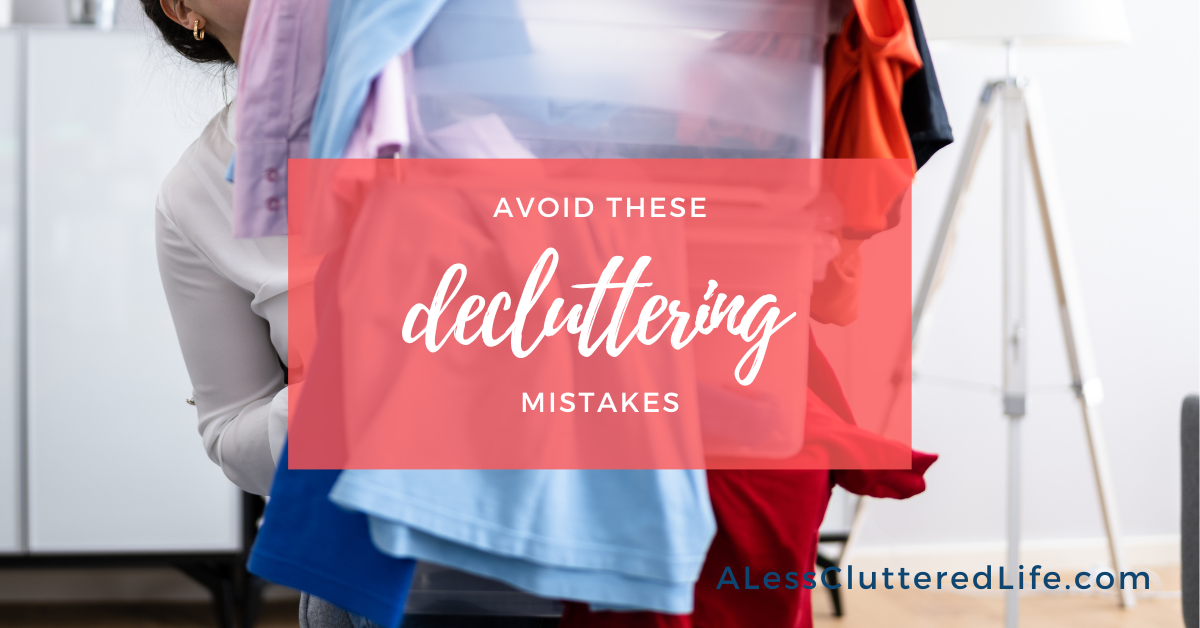
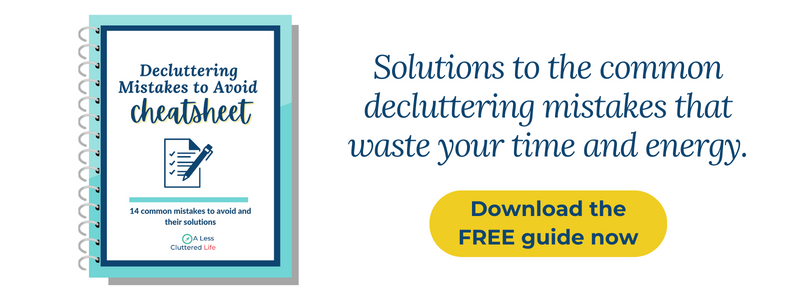
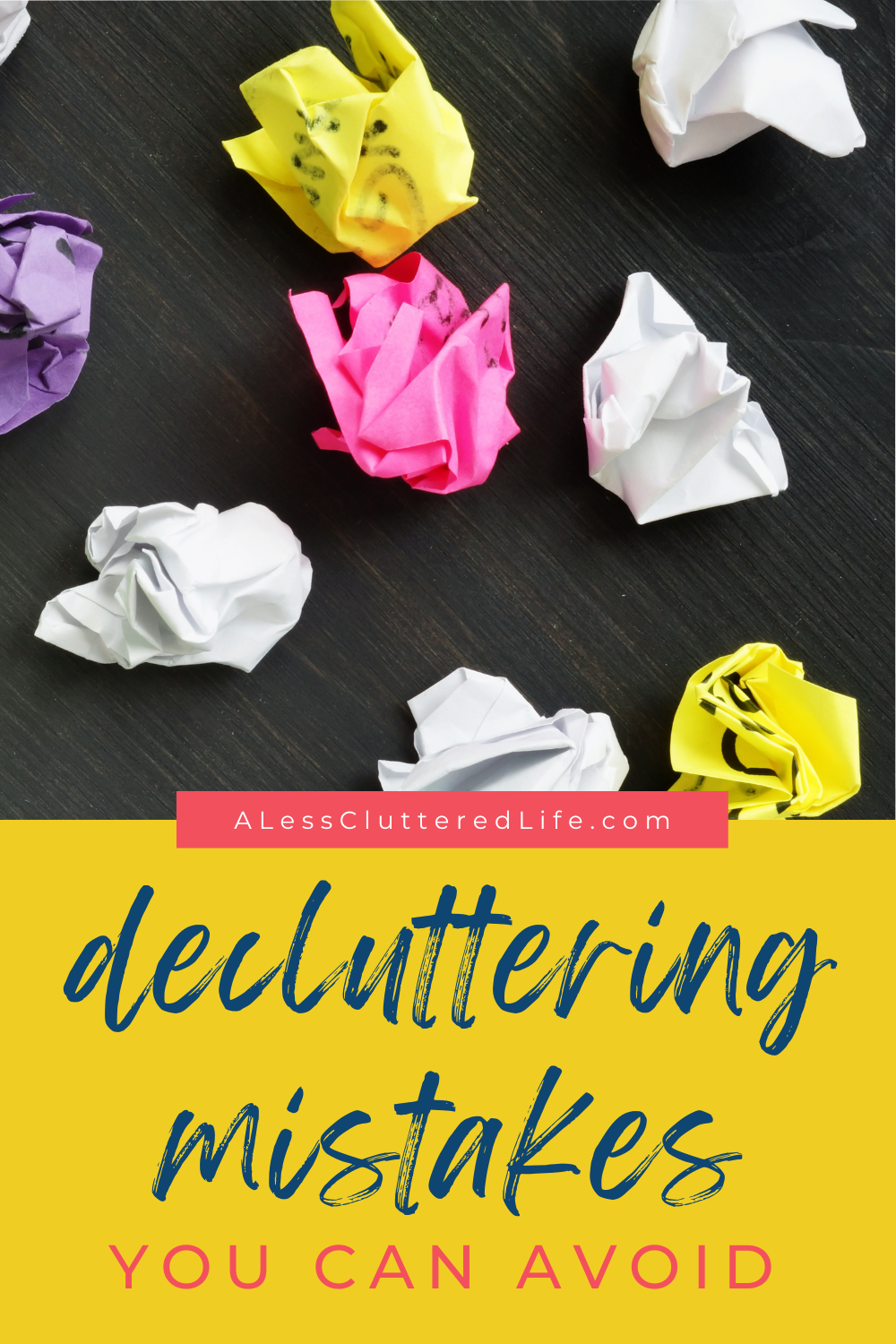
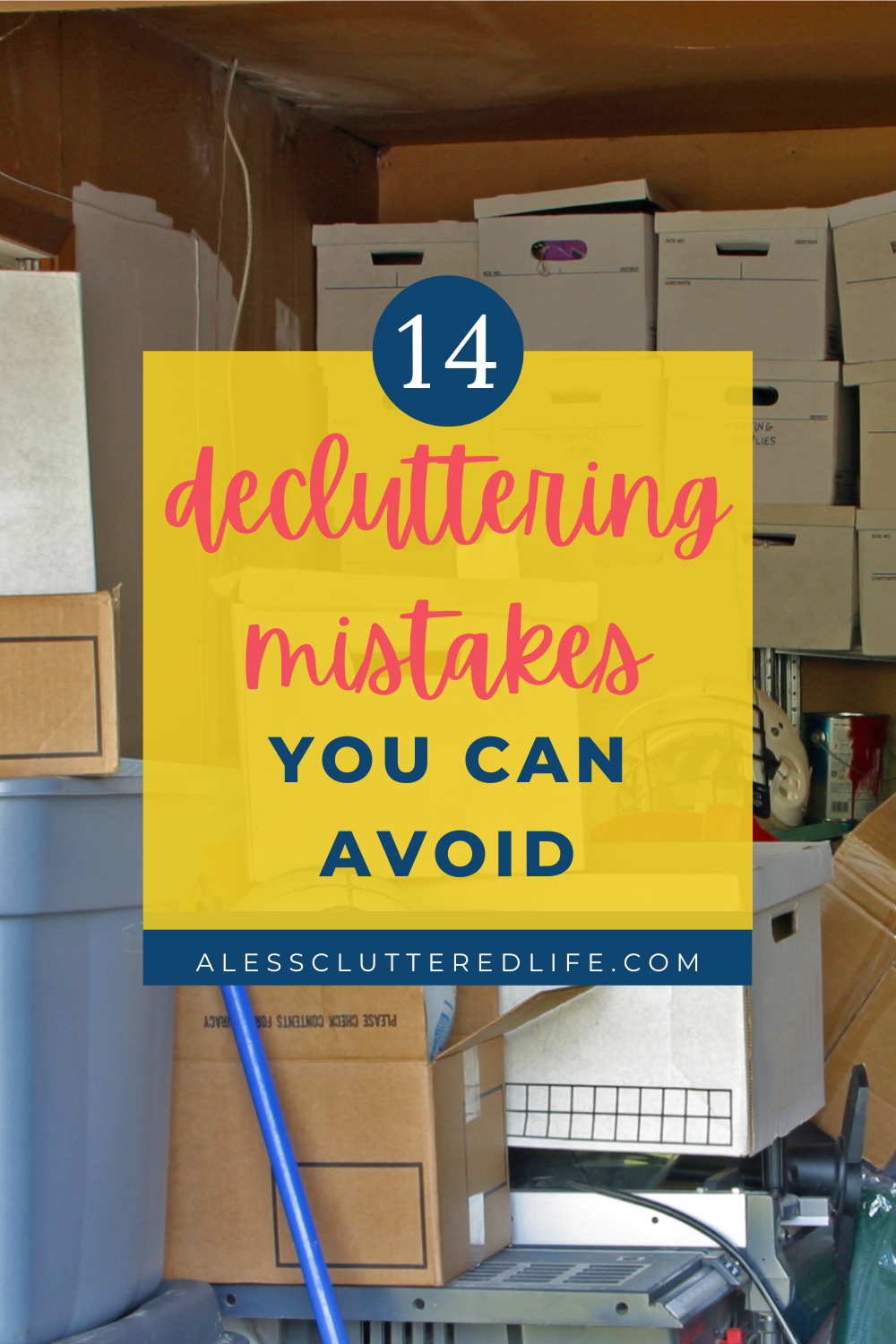
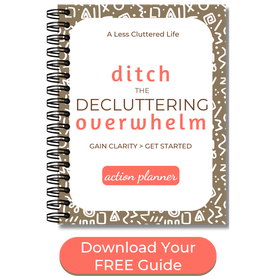

 RSS Feed
RSS Feed
